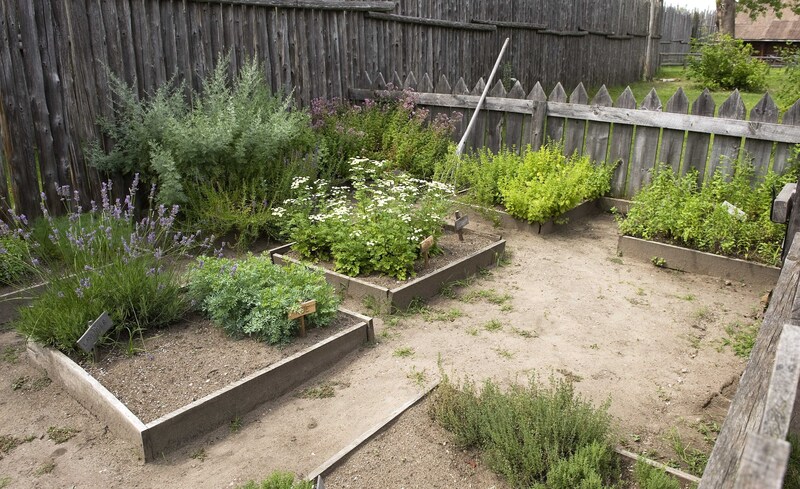Innovative Ways to Shield Your Garden from Weather Damage
Posted on 20/05/2025
Innovative Ways to Shield Your Garden from Weather Damage
Every gardener knows the frustration of watching a beautifully cultivated garden suffer from unpredictable weather events. Whether it's a sudden hailstorm, blistering heat, heavy rain, or unrelenting wind, extreme weather can devastate your outdoor sanctuary. In this comprehensive guide, we'll explore innovative methods to safeguard your garden against weather damage and help it thrive all year round. By using these cutting-edge techniques and adapting to nature's challenges, you can ensure your plants stay safe, healthy, and productive.
Understanding Weather Risks in the Garden
Identifying common weather threats to your garden is the first step in defending your green space. From intense sun and drought to pounding rain and frost, different climates bring unique challenges. Common types of weather damage include:
- Wind damage: Uprooting and damaging plants, breaking stems and branches.
- Hail: Shredding leaves and bruising fruits and flowers.
- Frost: Freezing and killing tender plants or causing cell damage.
- Heavy rainfall: Flooding roots and eroding soil.
- Heatwaves: Wilting and sunscald in sensitive plants.
Shielding your garden from weather extremes involves a combination of preparation, proactive planting, and clever technologies. Let's dive into creative solutions for each type of threat.

Physical Barriers: The First Line of Defense
1. Windbreaks and Shelterbelts
Planting or installing barriers as windbreaks is a traditional and effective method to protect your garden from wind damage. Modern innovations can enhance their efficiency:
- Living windbreaks: Rows of dense shrubs, trees, or bamboo create natural protection and habitat for wildlife.
- Permeable fencing: Semi-solid fences (like slatted wood or mesh) diffuse wind, reducing its impact without creating turbulence.
- Retractable screens: Easily deployed when strong winds threaten, then stowed away to maximize sunlight when conditions are calm.
2. Protective Covers and Row Tunnels
Innovative garden covers have become indispensable for shielding plants from various weather threats:
- Floating row covers: Lightweight, breathable fabrics placed over crops to shield from frost, wind, pests, and intense sun.
- Cloche systems: Portable, miniature greenhouses over individual or small clusters of plants. Choose modern materials such as UV-resistant plastic, or even smart panels that adjust opacity with sunlight.
- Pop-up tunnels and domes: Easily installed before a forecasted storm or hail event, and quickly removed after.
- Hail netting: Stretched over delicate fruit and vegetable beds, this specialized mesh dissipates the energy of falling hailstones.
Smart Gardening Technology
3. Automated Weather Monitoring Systems
Today, weather monitoring technology for gardens allows you to stay ahead of extreme conditions. Investing in _smart devices_ not only helps prevent damage, but can optimize plant care overall:
- Weather stations: Wireless sensors measure temperature, humidity, wind speed, and rainfall to provide real-time updates and alerts via your smartphone.
- Soil moisture sensors: Use data to avoid overwatering, and trigger irrigation systems during heatwaves to maintain optimal hydration.
- Frost alarms: Receive instant notifications when a sudden temperature drop could threaten tender plants, so you can cover them in time.
4. Smart Irrigation Solutions
Innovative irrigation systems do more than just water your plants - they can actively shield your garden from heatwaves, drought, and frost:
- Drip irrigation with timers: Delivers water directly to roots, reducing evaporation and preventing fungal issues.
- Soaker hoses with weather-based controllers: Automatically adjust watering schedules to weather forecasts and soil moisture levels.
- Misting systems for evaporative cooling: Protects delicate species during peak heat.
5. Automated Shade Protection
Automatic shading is an innovative way to shield your garden from intense sunlight and heat. Explore modern solutions such as:
- Motorized shade sails: Controlled via remote or smart device, these retract on cloudy days and deploy instantly when the UV index spikes.
- Adjustable pergolas and louvered canopies: Allow for precise control of sunlight exposure depending on the season and daily conditions.
Soil and Water Management for Weather Protection
6. Mulching for Moisture and Temperature Control
Applying a thick layer of organic mulch is a time-tested method to regulate soil moisture, protect roots from temperature swings, and reduce erosion. For a more innovative touch:
- Use reflective mulches: Like silver polyethylene sheets, to bounce light onto plant leaves and mitigate excess heat.
- Living mulches: Such as low-growing clover, offer continuous soil coverage and nitrogen fixation.
7. Elevated Beds and Rain Gardens
Preventing flood damage and improving drainage is essential in heavy rainfall zones. Try these innovative garden structures:
- Raised beds with self-watering reservoirs: Keep roots above waterlogged soil while ensuring consistent hydration during droughts.
- Rain gardens: Landscape depressions filled with water-loving plants capture runoff, filter out pollutants, and protect delicate garden areas.
8. Permeable Paving and Swales
Manage water flow and minimize erosion using permeable hardscapes:
- Permeable paths and patios: Constructed with gravel, porous pavers, or open-joint materials to direct excess rainfall to garden beds, not storm drains.
- Swales and berms: Shaped earthworks that slow down runoff and direct water away from vulnerable areas of your garden.
Plant Selection and Strategic Layout
9. Choosing Weather-Resilient Varieties
Some plants are naturally adapted to withstand specific weather stresses. Selecting the right cultivars can greatly reduce the need for intervention:
- Drought-resistant plants: Such as lavender, sedum, and ornamental grasses, which require less water and withstand heatwaves.
- Wind-tolerant species: Like Russian sage, artemisia, and yarrow, which have flexible stems or deep roots.
- Flood-tolerant options: Including iris, marsh marigold, and certain willows for low-lying sections of your yard.
10. Layering and Companion Planting
Emulate a natural ecosystem to minimize weather damage:
- Plant in layers: Trees, shrubs, perennials, and groundcovers create a wind-buffering, self-shading, and water-regulating effect.
- Companion planting: Group plants that provide mutual benefits, such as tall sunflowers shading tender lettuce or beans climbing up sturdy corn stalks.
11. Creating Microclimates
Designing microclimates within your garden provides specific plants with tailored protection:
- Utilize walls and fences: These radiate heat at night, reducing the risk of frost and providing shelter from the wind.
- Group sensitive plants together: To easily shield them with row covers or temporary structures during harsh weather.
Seasonal and Emergency Adaptations
12. Deploying Temporary Protection
Quick response techniques to shield your garden from sudden weather events include:
- Frost blankets and tarps: Keep a few on hand for unexpected cold snaps.
- Garden umbrellas or tents: Rapidly erected to prevent sunscald, hail, or torrential rain from damaging delicate blossoms or leafy greens.
- Moveable containers: Relocate potted plants to sheltered porches or indoor spaces during threatening conditions.
13. Regenerative Gardening Practices
Building your garden's resilience from the ground up is a long-term strategy:
- Soil health first: Regularly replenish compost and organic matter to build deeper, spongier soils that tolerate drought and absorb heavy rains.
- Continuous cover cropping: Protects soil structure between growing seasons and reduces erosion risk.
- Select native plant species: They are often better adapted to local weather extremes and require less coddling.

Embracing Climate-Smart Gardening
Today's weather is becoming more unpredictable, and climate-smart gardening may be the most forward-thinking way to shield your garden from weather damage:
- Monitor local climate trends: Use online tools and community observations to anticipate changes in rainfall, frost dates, and heatwaves.
- Plan for both extremes: Incorporate drought-tolerant and flood-tolerant features into the same garden where possible.
- Community action: Share resources, weather protection strategies, and alert systems with fellow gardeners in your neighborhood.
Conclusion: Weatherproof Your Garden for the Future
No matter where you live, protecting your garden from weather damage is an ever-evolving challenge. By combining state-of-the-art technology, natural engineering, and careful planning, you can create a beautiful, resilient outdoor space that weathers any storm and endures for years to come. Embrace these innovative garden protection methods and enjoy lush, vibrant plants in every season!
Remember: Prevention and preparedness are the keys to keeping your garden healthy, no matter what the forecast holds. Start today by integrating these creative solutions and set your green haven on the path to lasting success.

